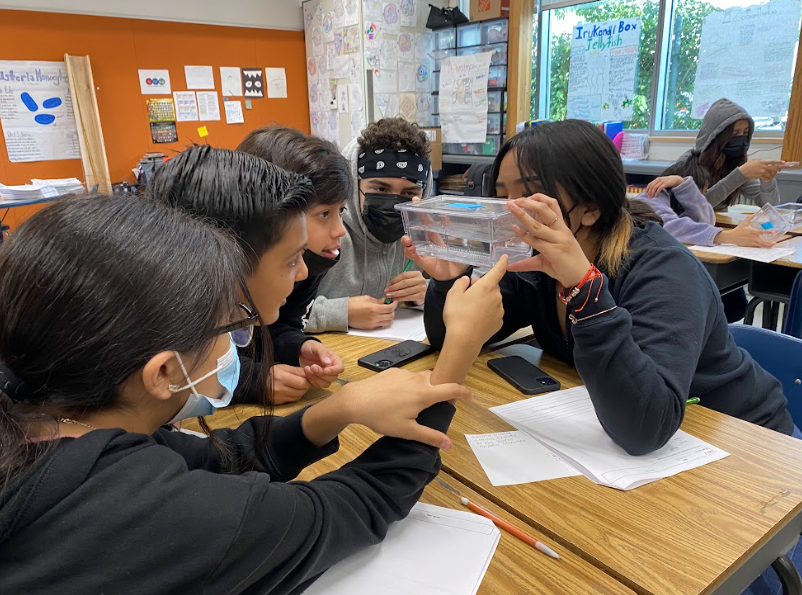In the heart of Southern California, a groundbreaking collaboration is transforming the landscape of science, technology, engineering and mathematics (STEM) education. The SoCal BioEYES program, an initiative led by graduate students at the University of California, Irvine Charlie Dunlop School of Biological Sciences, is redefining how science is taught to young learners, starting with El Sol Academy, a dual-immersion public charter school in Santa Ana. This unique program introduces scientific concepts — including environmental biology, genetics and cell biology — to middle school students through immersive, hands-on learning experiences that are both fun and enlightening.
At the helm of BioEYES is a belief deeply rooted in equity and inclusion: every child, irrespective of their background, should have the opportunity to get excited about science and envision themselves as future scientists. “We’re trying to reach students that come from underrepresented populations in science today … and show them that science is cool, and that they can pursue paths in science,” said Professor Michael Parsons, co-director of the program. This philosophy is not just about teaching science; it’s about nurturing a community-wide appreciation for the pursuit of knowledge and discovery.
The essence of the BioEYES curriculum is its engagement with real-life science. Through direct interaction with live zebrafish, students gain an intimate view of biological processes, turning abstract concepts into tangible realities. Kathleen Leon Parada, a graduate student participant, elaborates on the program’s hands-on approach in which graduate students like herself enter the classrooms and teach: “We give them a male and female zebrafish to mate, and they hypothesize on the phenotype and genotype of the offspring … It’s interactive because they get to handle fish and watch the embryos develop over time.” This method proves invaluable, bridging the gap between textbook learning and real-world science.
The program also serves as a developmental platform for the graduate student volunteers, enhancing their own ability to communicate complex scientific ideas in an accessible manner. “It challenges me to break up much bigger concepts into the smallest pieces,” said graduate student Raquel Bowman. “It forces me to find these metaphors that the kids will really understand and appreciate.” This reciprocal learning experience enriches both the educators and the students, fostering a vibrant educational exchange.
Teachers like Brooke Del Padre from El Sol Academy witness firsthand the transformative impact of BioEYES on their students. “The BioEYES program is the most unique program I have ever had the chance to implement in my classroom … Each year, my students look forward to participating in BioEYES, and on our end-of-year survey, students say that it is the most memorable experience from their middle school science classes,” said Del Padre. Echoing her sentiments is Chanel Lewis, who notes the profound effect on her students: “The week-long hands-on program is the highlight of the year. You can hear the excitement and see the sense of wonder after they make observations from the microscope. A significant majority identify the BioEYES experiment as their favorite.” The enthusiasm they share is a testament to the program’s effectiveness in sparking a lifelong interest in science among young learners.
The SoCal BioEYES program takes great care in ensuring all students, regardless of their background, can fully engage with and benefit from these scientific activities by providing materials in both English and Spanish. This approach not only fosters a love for science among students but also builds bridges with their families, encouraging a community-wide appreciation for STEM education.
As the SoCal BioEYES program looks to the future, it aims to expand its reach, offering more students the chance to dive into the world of science with enthusiasm and curiosity. The program’s success is a beacon of hope, showing that when education is hands-on, interactive and inclusive, it can inspire a new generation of scientists, engineers and innovators.
By fostering an early interest in STEM, the SoCal BioEYES program is not just educating students; it’s nurturing the scientists of tomorrow.
To learn more about the SoCal BioEYES program and how it’s inspiring students across Southern California, visit their website: https://sites.uci.edu/socalbioeyes/


